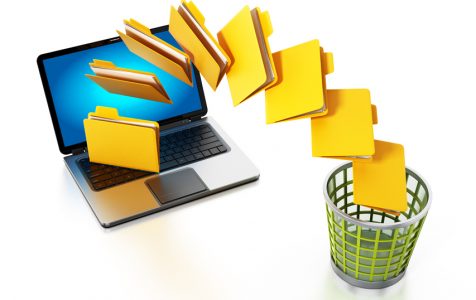It’s super frustrating to keep on deleting files from your computer only to find that they keep on coming back.
Deleting files from your computer is easy. By simply pressing the Delete key, a file is automatically moved to the Recycle Bin. A combination of Shift + Delete keys, on the other hand, permanently deletes the selected files. However, this simple file deletion process can get complicated if the deleted files or folders keep reappearing on your computer.
Be it your ex’s pictures or videos, old files and folders, when you want them gone, they shouldn’t resurface and come back. Being haunted by your computer can be off-putting. Luckily, we have the right fix for the situation.
Why Deleted Files Keep Reappearing in Recycle Bin?
The Recycle Bin is one of the few locations that barely get corrupted, but it does happen. When it does the outcome includes the reappearance of deleted files. Corrupt files can be a result of a malware infection or a virus attack. Therefore, when you experience this type of problem, you must consider running a trusted anti-malware security suite in your system to get rid of malicious programs.
Expert Tip: For smoother PC performance, consider using a PC optimization tool. It handles junk files, incorrect settings, and harmful apps. Make sure it's right for your system, and always check the EULA and Privacy Policy.
Special offer. About Outbyte, uninstall instructions, EULA, Privacy Policy.
The exact cause of the issue is yet to be determined, but there are various reasons why it might be occurring. Regardless of what’s causing it, we have prepared a couple of solutions to help rid the problem.
How to Fix Deleted Files Coming Back on Recycled Bin
If deleted files keep coming back on Recycle Bin, try out these fixes chronologically for better results.
Solution #1: Re-Configure Permission Settings
To do this, follow the steps below:
- When the deleted folder reappears, right-click on it, and then select Properties.
- Now, hover to the Security tab and click the Advanced button.
- Click on the Owner option and select Edit.
- Hit the Change button and provide access to Everyone. After that, select Apply, and then OK.
- Select the Edit feature and go to Permission for SYSTEM tab. Toggle all permissions to Allow.
- Click on Apply and select OK to finish the process.
If the file is inside a folder, apply the above steps to the route folder. Restart the computer when done and check if the issue has been resolved in the next startup.
Solution #2: Use the Safety Scanner Tool
Microsoft’s Safety Scanner tool is a useful utility for detecting and getting rid of malicious scripts in the operating system. Thus, if you keep experiencing this issue, you can download this free utility and run it to check if there are any malware entities causing this behavior. To do so, follow the steps below:
- To run the Safety Scanner, you first need to download the utility since it is not a built-in tool. You can get it from the MS official site.
- Once installed, run the utility and choose your desired type of scan. There are 3 types of scans namely Quick scan, Full scan, or Customized scan. We recommend running a Full scan if it’s the first time.
- Once you have selected the scan, click on Next and wait for the process to complete. This may take several minutes. Once done, the utility will report the issues found, deleted, or removed. You can check for more details by clicking on View detailed results of the scan.
- Restart the computer and check if the error has been resolved.
If infected files were removed alongside important data, you can always recover the data using a trusted file recovery tool.
Solution #3: Deactivate Sync Services
If you’re currently using a cloud syncing service, it is possible that it could be causing the issue. Be it a native or third-party cloud service in use, a Sharp shell is in control of the context menu. Since this functionality is part and parcel of the cloud service, the only way around it is to deactivate the service. If it’s a third-party cloud service, it would be best to uninstall it and the deletion functionality will return to its normal state.
Solution #4: Format the Hard Disk Partition
At times, the file deletion functionality can be compromised by a hard drive corruption which leads to strange computer behaviors. In such a scenario, formatting the hard disk partition will help solve the problem. Note that formatting a hard disk partition leads to loss of data. If an overwrite is performed, the formatted data is not recoverable. Therefore, before formatting, make sure you backup your important files.
Try out these solutions to fix the problem concerned with files that keep on reappearing when deleted. Note that, most of the PC issues can be avoided by keeping your system clean from viruses. Constant removal of junk files can also help maintain your computer at optimum free from errors and crashes. If you find it taxing, install a comprehensive computer repair tool programmed to address a range of system issues.
